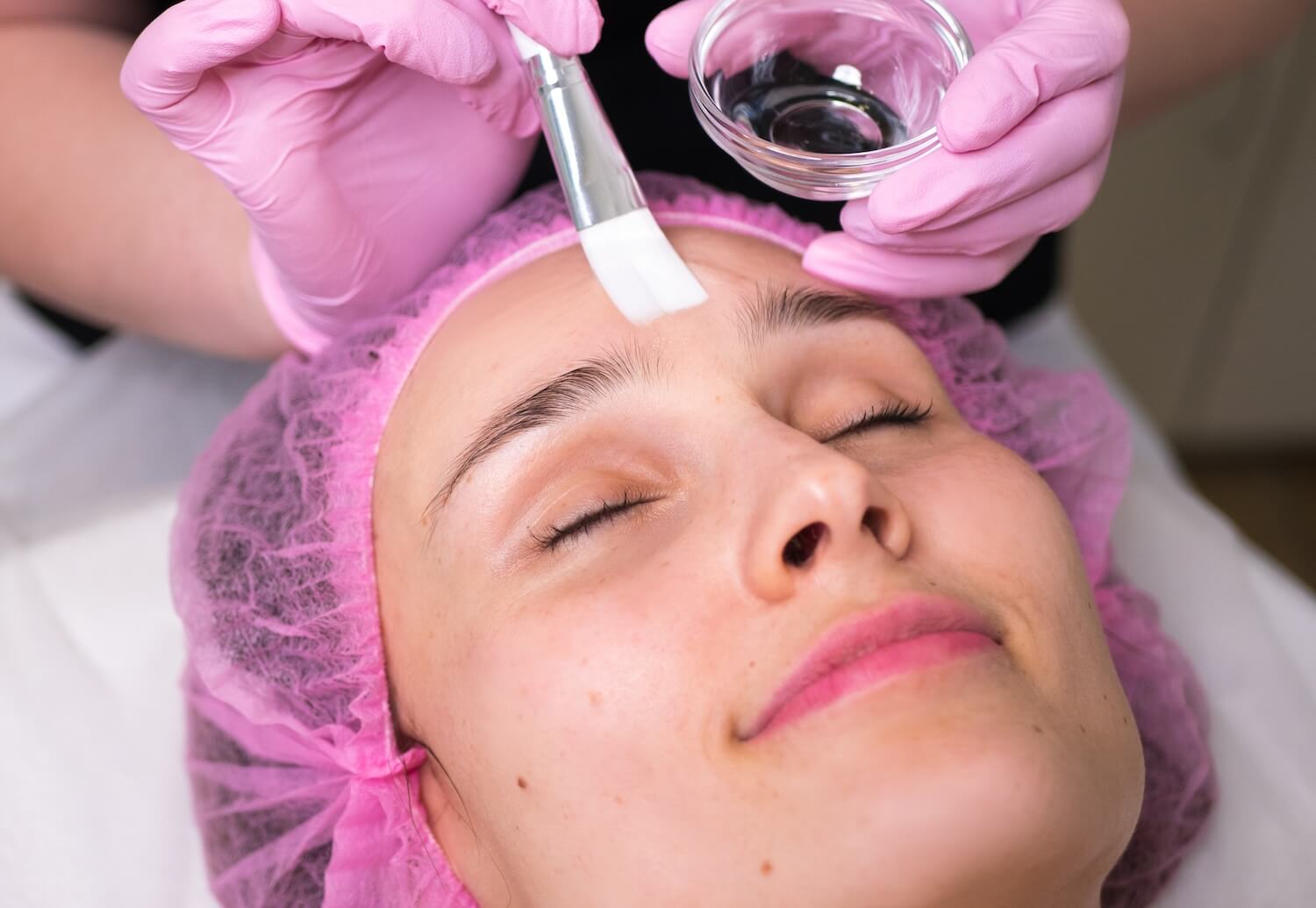Chemical peel treatments are one of the most popular skin resurfacing procedures, offering a range of benefits from brightening the complexion to addressing acne scars and wrinkles. For decades, people have turned to chemical peels to rejuvenate their skin and resolve a variety of skin issues. But while the term “chemical peel” is familiar, many people aren’t fully aware of how they work, the different types available, and how to best care for the skin before and after treatment. This article takes a deep dive into the world of chemical peels—exploring how they help peel away imperfections and lead to smoother, healthier-looking skin.
What is a Chemical Peel?
A chemical peel is a cosmetic treatment in which a chemical solution is applied to the skin to remove its outermost layers. As the top layer peels off, the skin underneath regenerates, often resulting in a fresher, smoother, and more youthful appearance. The chemical solution, which can be customized based on individual skin needs, works to exfoliate the skin, stimulate cell turnover, and encourage collagen production, all of which improve skin texture and tone.
Peels vary in strength and are classified into three main categories: superficial, medium, and deep. The level of the peel is determined by the concentration and type of acid used, and each type addresses different skin concerns.
The Science Behind Chemical Peels: How Do They Work?
To understand how chemical peels work, it’s essential to know a bit about the structure of your skin. Your skin is composed of several layers, with the epidermis being the outermost layer that sheds naturally over time. Beneath the epidermis lies the dermis, where collagen and elastin—the proteins responsible for skin firmness and elasticity—are produced.
Chemical peels target either the epidermis or both the epidermis and dermis, depending on the depth of the treatment. The chemicals in the solution break down the bonds between dead skin cells, causing them to loosen and eventually peel away. As this outer layer sheds, newer skin cells replace it, resulting in improved skin texture, tone, and overall appearance.
- Superficial Peels only reach the epidermis and are the gentlest type of peel, ideal for mild skin imperfections like rough texture or uneven tone.
- Medium Peels penetrate the dermis, providing more significant results for issues like fine lines, deeper wrinkles, and moderate sun damage.
- Deep Peels go even further, penetrating deep into the dermis to treat more severe skin problems, such as deep wrinkles, scars, and extensive sun damage.
Types of Chemical Peels: Which is Best for Your Skin?
Choosing the right chemical peel depends on your specific skin concerns, skin type, and the results you’re looking to achieve. Here’s a closer look at the most common types of chemical peels and what they can do for your skin:
1. Alpha Hydroxy Acid (AHA) Peels
Alpha hydroxy acids, such as glycolic, lactic, and citric acids, are derived from natural sources like fruits, sugar, and milk. These peels are typically superficial, meaning they only affect the outer layer of the skin. AHAs are great for improving the overall texture of the skin, treating minor discoloration, and reducing the appearance of fine lines. Glycolic acid, for instance, is a common choice for those looking to gently exfoliate and brighten their skin.
- Best for: People with dry or sensitive skin, those with mild sun damage, fine lines, and uneven skin tone.
- Recovery time: Minimal. Most people can return to their normal activities immediately, though slight redness and flaking may occur for a few days.
2. Beta Hydroxy Acid (BHA) Peels
Beta hydroxy acid peels, primarily salicylic acid, are oil-soluble, making them particularly effective for those with oily or acne-prone skin. BHA peels exfoliate dead skin cells while also penetrating deeper into the pores to dissolve excess oil and prevent breakouts. They also have anti-inflammatory and antibacterial properties, making them a popular option for those dealing with persistent acne.
- Best for: Oily, acne-prone skin, clogged pores, and blackheads.
- Recovery time: Minimal, with potential flaking or redness for a few days post-treatment.
3. Trichloroacetic Acid (TCA) Peels
TCA peels can range from mild to medium-depth, depending on the concentration of the acid. This peel can treat a variety of skin concerns, including fine lines, wrinkles, sun damage, and hyperpigmentation. Because of its ability to penetrate more deeply into the skin, TCA peels are a popular choice for those looking for more dramatic results. However, the recovery time is longer compared to AHA or BHA peels.
- Best for: People with moderate to severe sun damage, pigmentation issues, and fine lines.
- Recovery time: Moderate. Redness and peeling can last 7-10 days, with full recovery taking up to two weeks.
4. Phenol Peels
Phenol peels are the most intense type of chemical peel and offer the most dramatic results. This type of peel is used for deep wrinkles, severe sun damage, and deep acne scars. Because phenol peels penetrate deeply into the skin, they can cause significant peeling, swelling, and discomfort during the recovery process. However, the results can be long-lasting, making this peel suitable for individuals looking for substantial improvement in skin texture and appearance.
- Best for: Deep wrinkles, scars, and extensive sun damage.
- Recovery time: Long. Swelling, peeling, and redness can last several weeks, with the full recovery process taking months.
The Chemical Peel Procedure: What to Expect Before, During, and After
Before the Treatment
Preparing your skin before a chemical peel is crucial for achieving the best possible results and minimizing the risk of complications. In the weeks leading up to your peel, your dermatologist or skincare professional may recommend a skincare regimen that includes:
- Hydration: Keeping your skin well-hydrated will help with healing after the peel.
- Sun protection: Avoid excessive sun exposure, and use a broad-spectrum sunscreen daily.
- Pre-peel products: In some cases, you may be instructed to use products containing ingredients like retinoids or AHAs to prime the skin and enhance the effectiveness of the peel.
Additionally, avoid any other exfoliating treatments, such as waxing, laser treatments, or microdermabrasion, in the weeks leading up to your peel.
During the Treatment
Chemical peel treatments typically take around 15 to 30 minutes. Here’s a step-by-step guide of what you can expect during the process:
- Cleansing: Your skin will be thoroughly cleansed to remove any dirt, oil, or makeup.
- Application: The chemical solution is applied to your skin using a brush, gauze, or cotton pad. The depth and concentration of the solution depend on the type of peel chosen.
- Reaction time: You may feel a mild tingling or burning sensation as the chemical works on your skin. For deeper peels, a fan or cooling device may be used to minimize discomfort.
- Neutralization: After the solution has been on your skin for the appropriate amount of time, it will either be neutralized (for certain types of peels) or allowed to self-neutralize.
After the Treatment
The post-peel recovery process depends largely on the depth of the peel. Here’s a general outline of what you can expect:
- Superficial Peels: Your skin may be slightly red and sensitive for a few days, with minor flaking or peeling. There’s minimal downtime, and most people return to their regular activities the next day.
- Medium Peels: The skin will turn red, swollen, and start peeling within 2-3 days after the treatment. Peeling can last for up to a week, and sun protection is vital during this period.
- Deep Peels: After a deep peel, your skin will be swollen, red, and may feel raw for several days. The peeling process can take several weeks, and you’ll need to follow a strict skincare regimen to aid healing and prevent infection. Avoid sun exposure entirely during this time.
Benefits of Chemical Peels: Why They’re Worth It
The benefits of chemical peels go beyond just skin exfoliation. With the right peel, you can:
- Smooth fine lines and wrinkles: Chemical peels stimulate collagen production, which helps smooth out fine lines and wrinkles.
- Brighten skin tone: Peels help reduce the appearance of pigmentation issues, such as dark spots, melasma, and age spots, resulting in a brighter, more even complexion.
- Improve acne and acne scars: Salicylic acid peels, in particular, help clear up acne and prevent future breakouts, while deeper peels can improve the appearance of acne scars.
- Minimize pores: Chemical peels help shrink enlarged pores by promoting skin regeneration and improving overall skin texture.
- Boost skincare absorption: By removing the outer layer of dead skin cells, chemical peels allow your skincare products to penetrate more deeply and work more effectively.
Are Chemical Peels Safe for All Skin Types?
While chemical peels can be beneficial for most skin types, they may not be suitable for everyone. Those with very sensitive skin or certain skin conditions, such as eczema, psoriasis, or active infections, should avoid chemical peels. Additionally, individuals with darker skin tones may be at higher risk for post-inflammatory hyperpigmentation (PIH) after medium or deep peels. However, with careful selection of the type of peel and the appropriate concentration, people with darker skin can safely enjoy the benefits of chemical peels.
Consulting with a dermatologist is essential to determine the right type of chemical peel for your skin type and concerns.
Conclusion
Chemical peels are an effective, customizable treatment option for a variety of skin issues, including wrinkles, acne scars, and pigmentation problems. With proper preparation, treatment, and aftercare, chemical peels can help you achieve smoother, more youthful skin. Whether you’re looking for a mild exfoliation or a deeper skin transformation, there’s a chemical peel out there to suit your needs.
As always, consult with a skincare professional to determine which peel is best for you and follow all aftercare instructions to ensure optimal results. By peeling away imperfections, chemical peels offer a fresh start for your skin.

